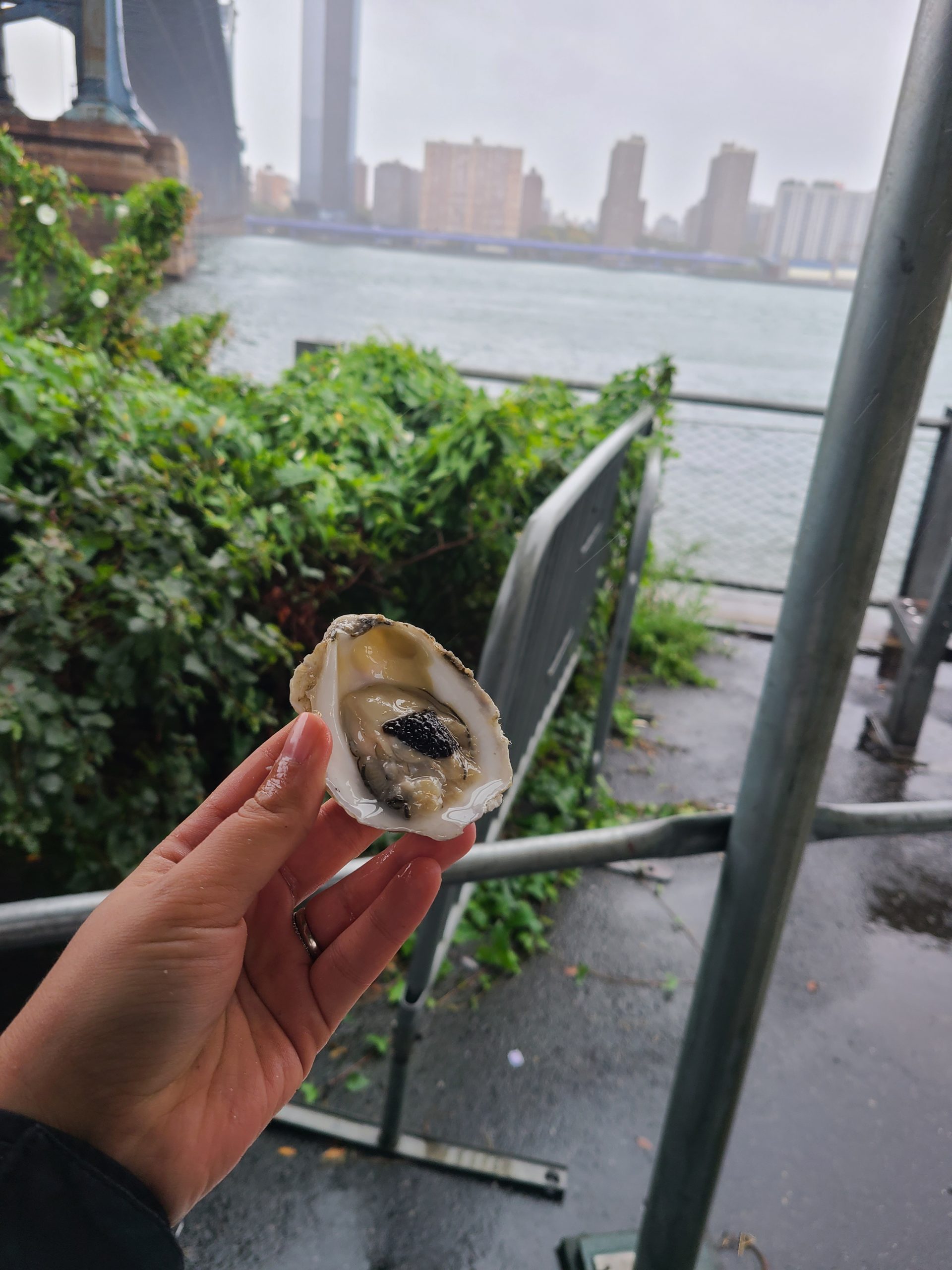
The wind whips back and forth strongly, and rain falls sideways from the grey sky above the DUMBO section of Brooklyn, New York. It’s an uncharacteristically frigid day in October. But I don’t mind, because I’m checking a major point off of my bucket list – shucking oysters in Brooklyn.
Oh, you mean that’s not on your bucket list? Well it should be. You might be wondering why it’s on mine, so I’ll clue you in.
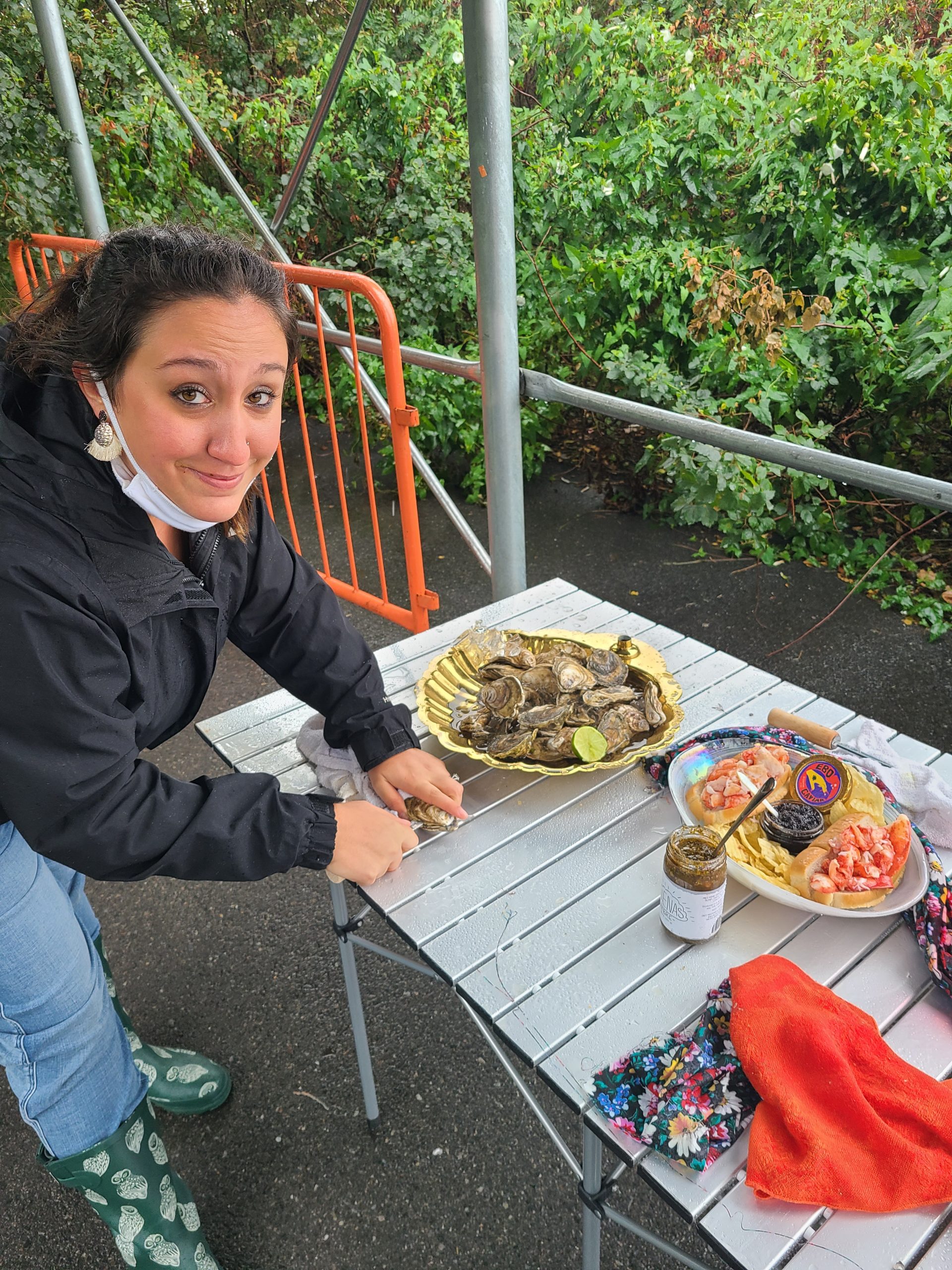
The Role of Oysters in New York’s History.
As Amanda and I walked beneath the Manhattan Bridge, Alexis stood grinning and joyful despite the poor weather. As she says, she’s a “rain or shine type of gal” and that is for sure the truth! Many people would have been put off by the poor weather, but I found it really ethereal and alluring. There was a faint mist over the water, and I felt connected with the ghosts of New Yorkers from years ago for whom oysters were important. Perhaps someone once stood in the spot where I would do my lesson. Maybe they had worked as an oyster shucker, or enjoyed a few of the beloved bivalves with their friends.
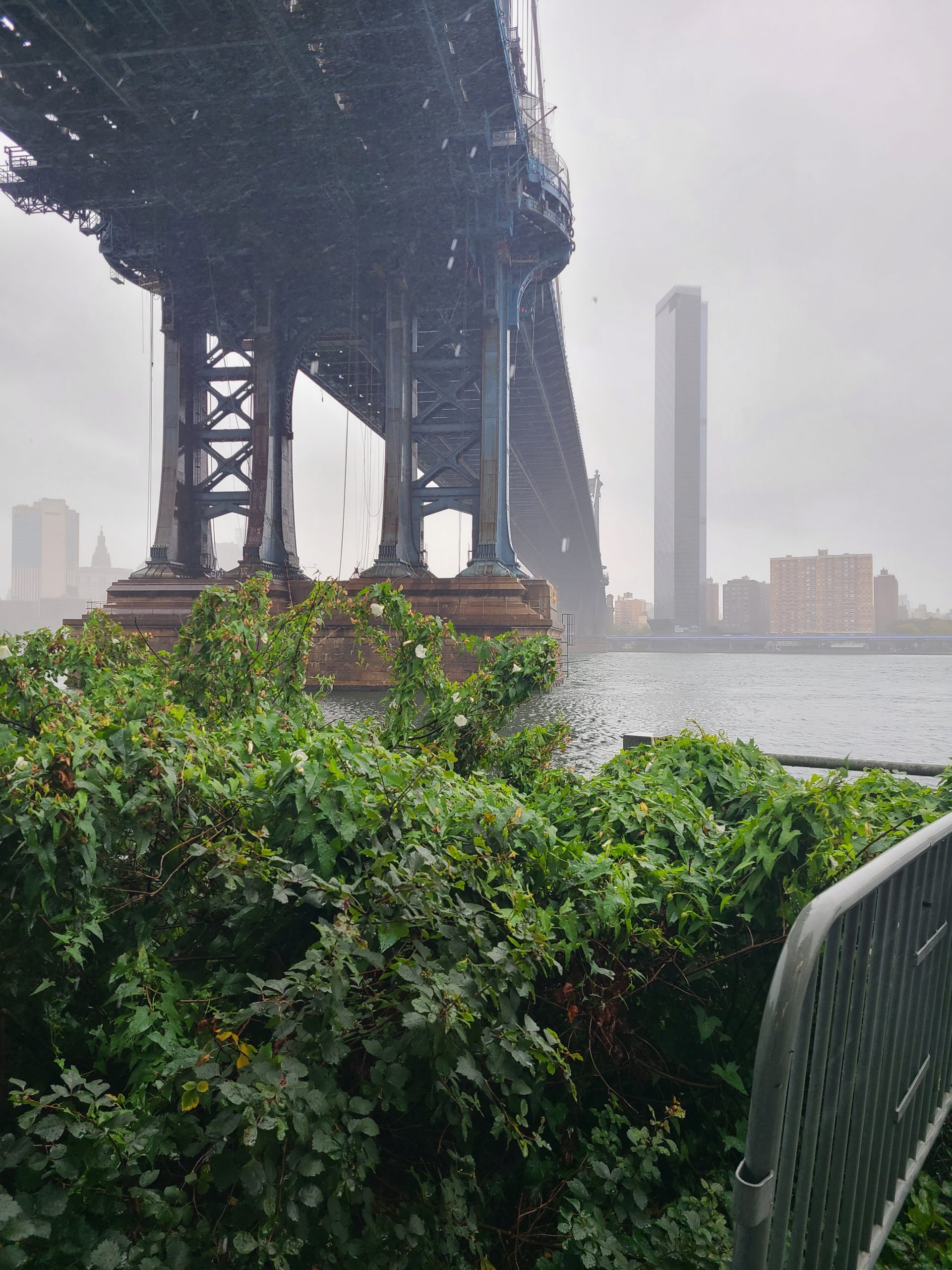
Many people are shocked to find out that New York has such important ties to oysters.
I began reading The Big Oyster: History on the Half Shell, and highly recommend it so far. Before the dirty water dog, dollar pizza slice, and giant pretzel – a New York staple was the oyster. There were a ton of them in the city, first harvested by the Lenape Indians before white settlers came. In Henry Hudson’s day, the size of the oysters measured as large as one foot (how the fuck do you eat those?) In the 18th and 19th century, oysters were all the rage.
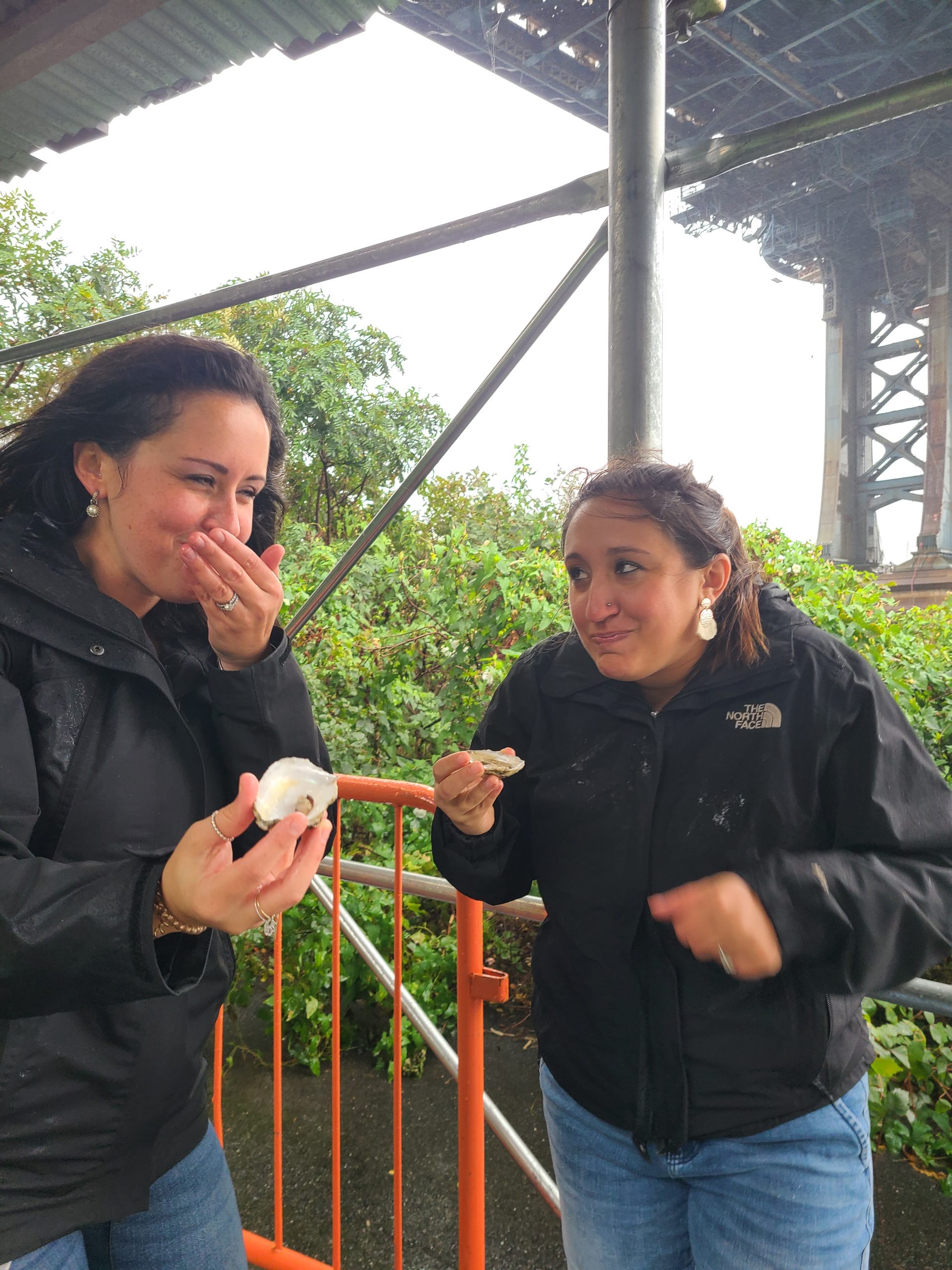
They were a food that everyone, from the very wealthy to the most poor, ate because they were rich in vitamins and nutrients. Haute cuisine eateries served them, but so did food stands on the sides of the street. In the way one can grab a hot dog or roasted nuts from a vendor today, folks in NYC used to be able to do the same with oysters. Oyster cellars, typically dive-like places, popped up around the city and catered to the masses.
Oysters were undoubtedly an important role in the economic and social strata of New York.
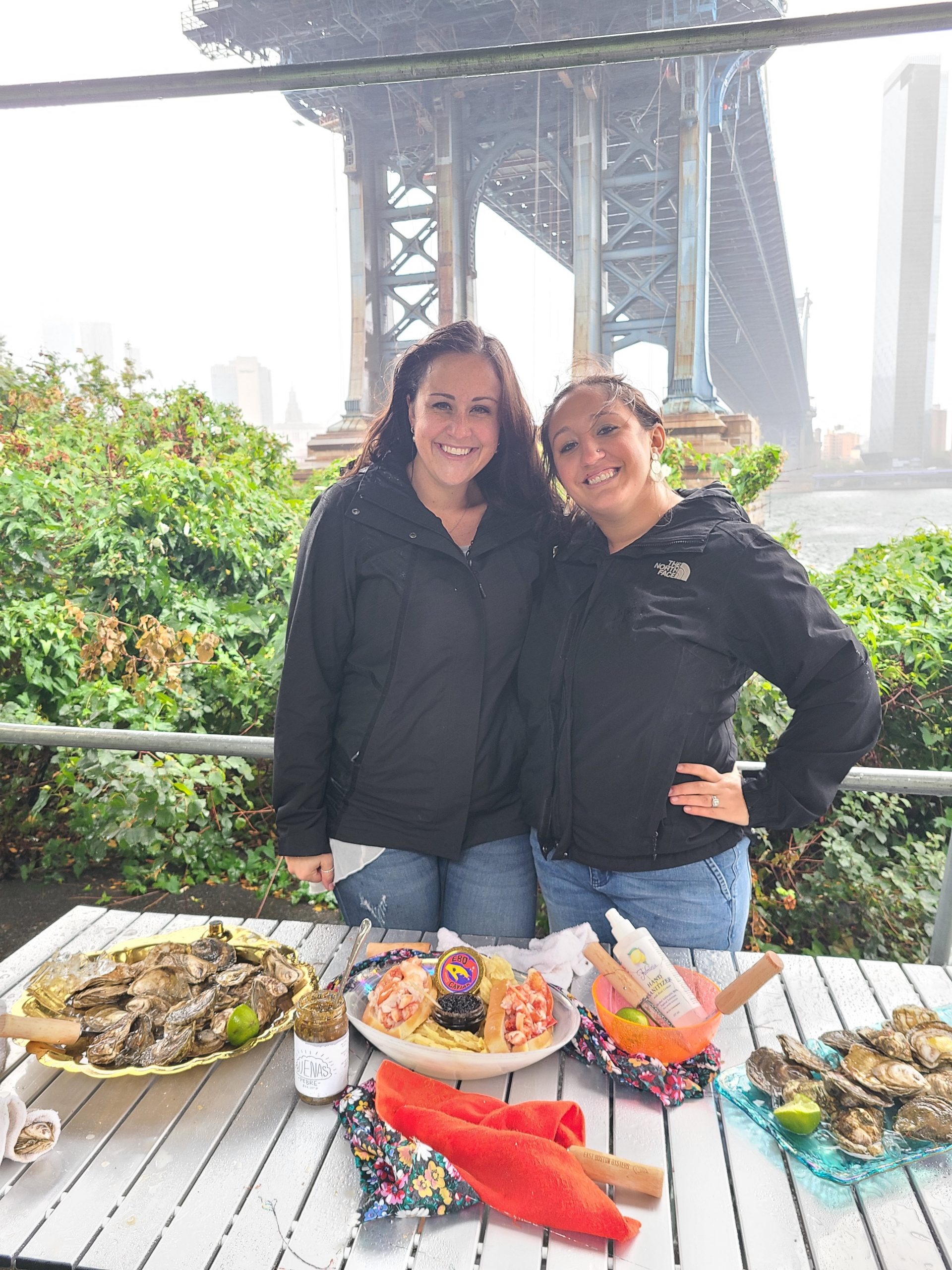
Oysters as a Means of Culture.
It’s important that you know I really suck at new things on the first try. Actually, I’m pretty much shit until the 20th attempt at ANYTHING new, and so I’m easily dissuaded from trying new things. For that reason, I was a bit apprehensive for my lesson. I remember being at Acme Oyster House in New Orleans and watching the men shuck oysters, which looked like giant rocks, a mile a minute. In fact, I’ve only ever seen men do the cleaning and preparing of seafood.
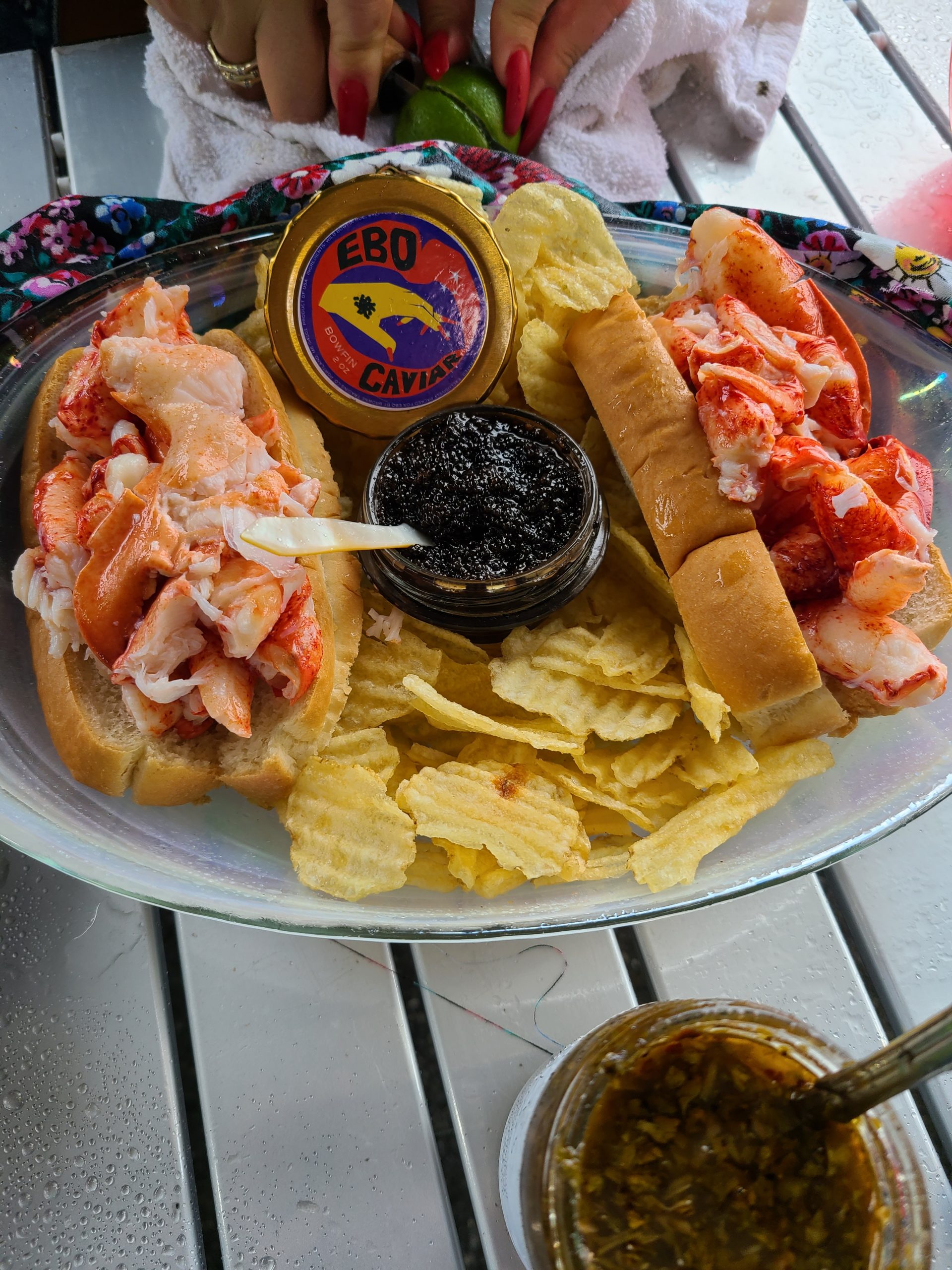
Growing up on Long Island, I was able to always enjoy the freshest of shell fish and seafood in general. We didn’t get our seafood from the big brand name stores. My parents always took me to the mom and pop fish markets to pick up our fish dinners, which mom would cook at home. I watched in awe at the fish being gutted, plucked, de-boned, and the shellfish being cleaned and cracked open. However, I had only ever seen men doing those jobs, and so I grew up feeling that these types of skills weren’t ones that I could possess.
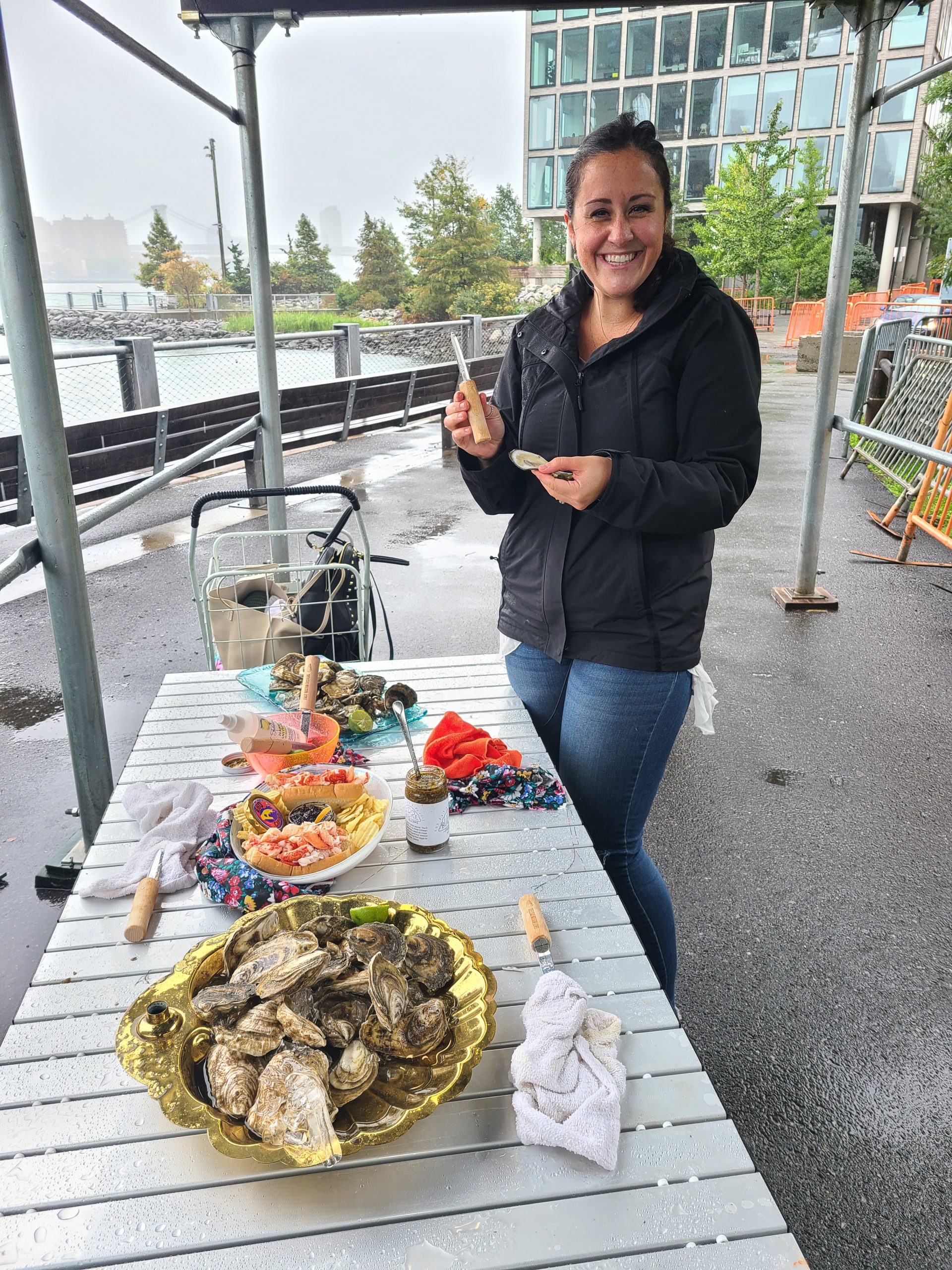
Why Would Shucking an Oyster Be Important?
Good question. Shucking an oyster is just one of the many ways that people feel more connected, and thus more respectful and appreciative, of the locally sourced food that they devour. There are many people and cultures since the beginning of time who feel that catching and preparing one’s own food is a heart-ful way to connect with your food. I absolutely agree.
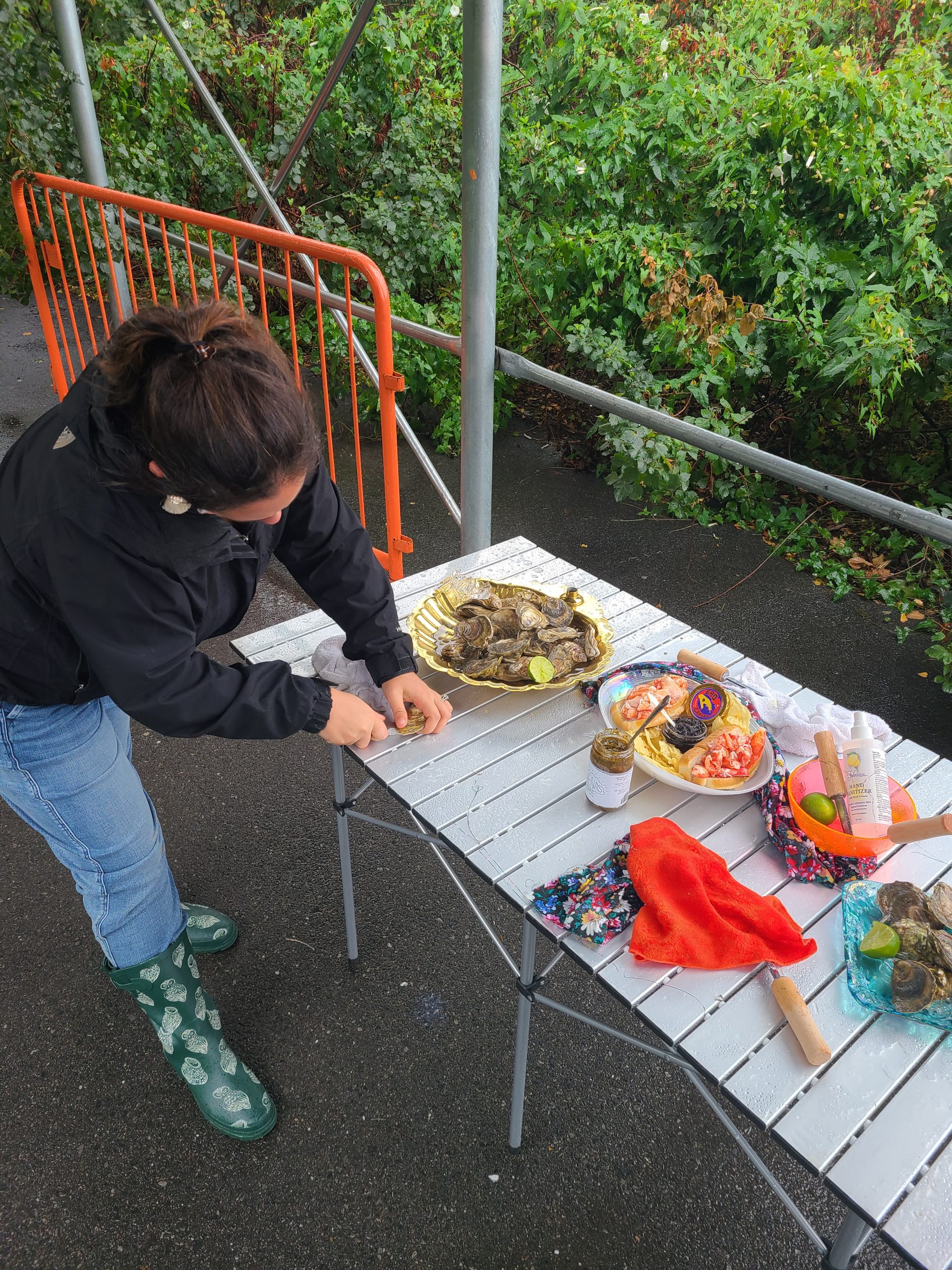
Following Alexis’ demonstration, it was our turn to shuck an oyster. I’m proud to say that for the first time in my life, this new skill came unbelievably easy to me! The amount of pride and shock I felt when I realized that my knife had cracked the shell and slid into the oyster was incredible. With a few more maneuvers, I held a plump, perfectly sized oyster in my hands on the half shell ready to eat.
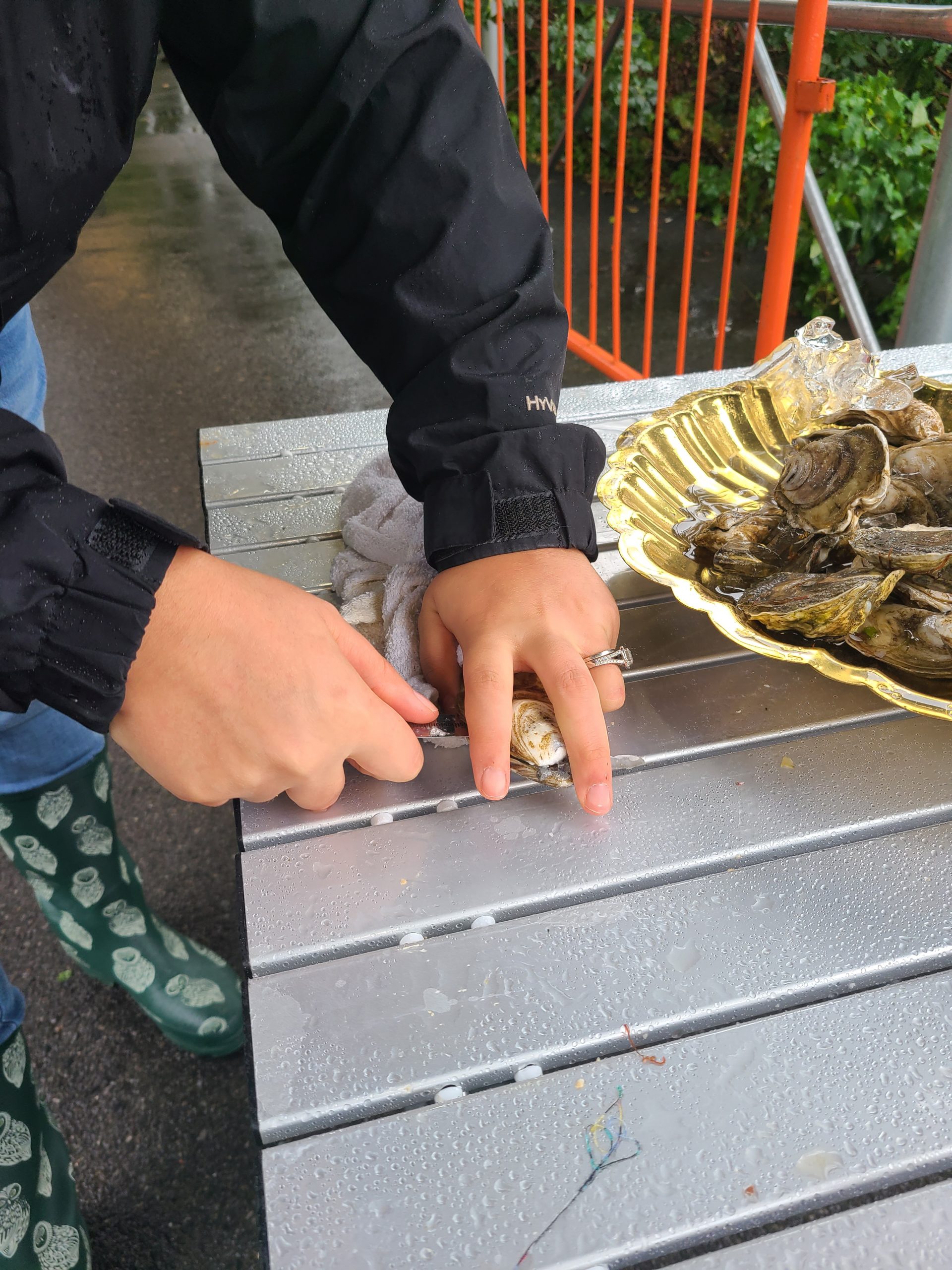
Typically I’ve only had cocktail sauce with fresh oysters. But Alexis opened our eyes to the joys of fresh squeezed limes on the mollusk and HOLY SHIT was that a game changer! The tanginess of the citrus on the sweet and saltiness of the oyster was heavenly. I had no idea that it was possible for an oyster to taste like a margarita! Our host also brought a spicier and garlicky chimchurri style sauce as an accroument, which was a real kick in the mouth.
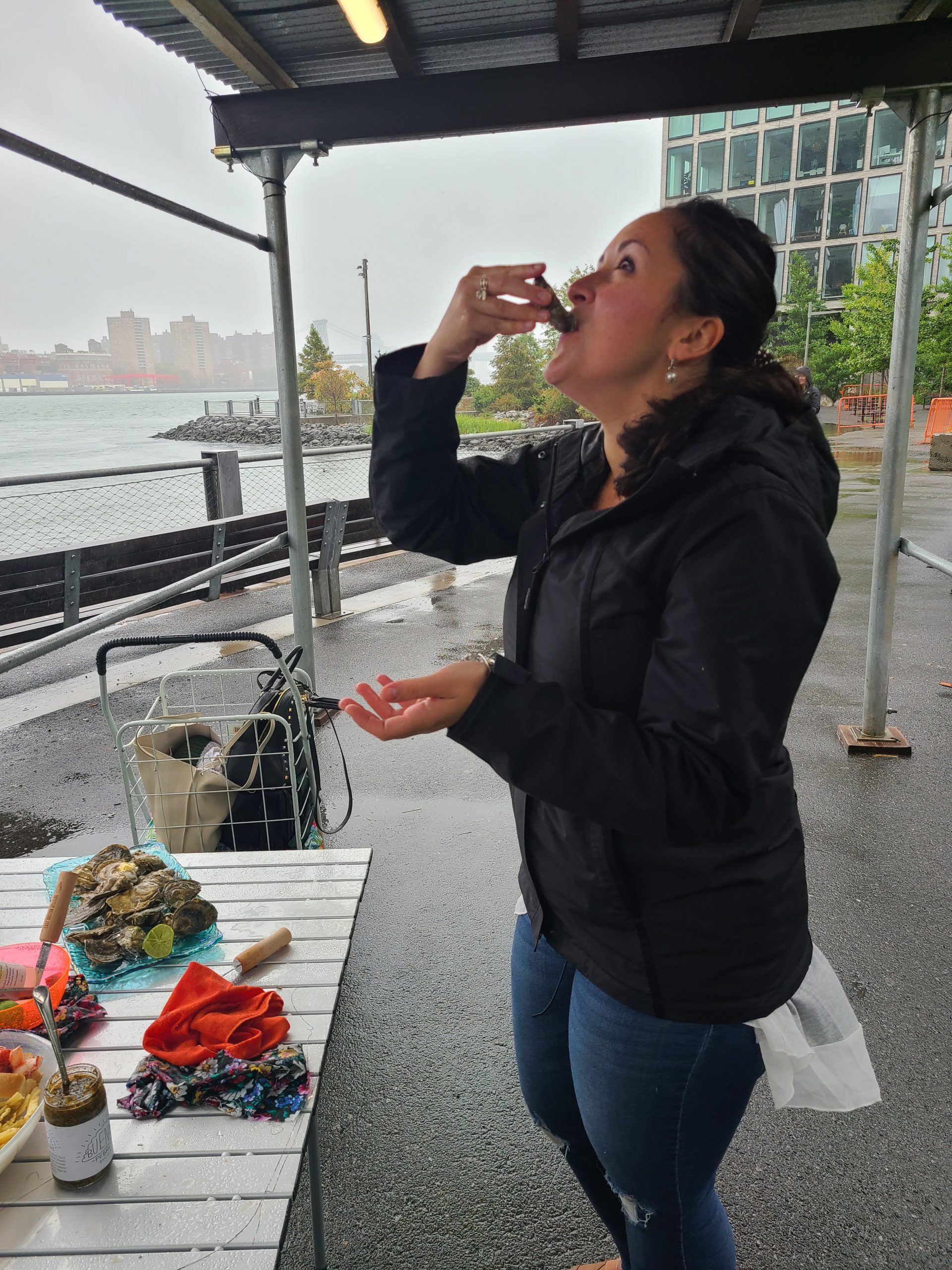
The Most Bougie and Bespoke Lunch Ever.
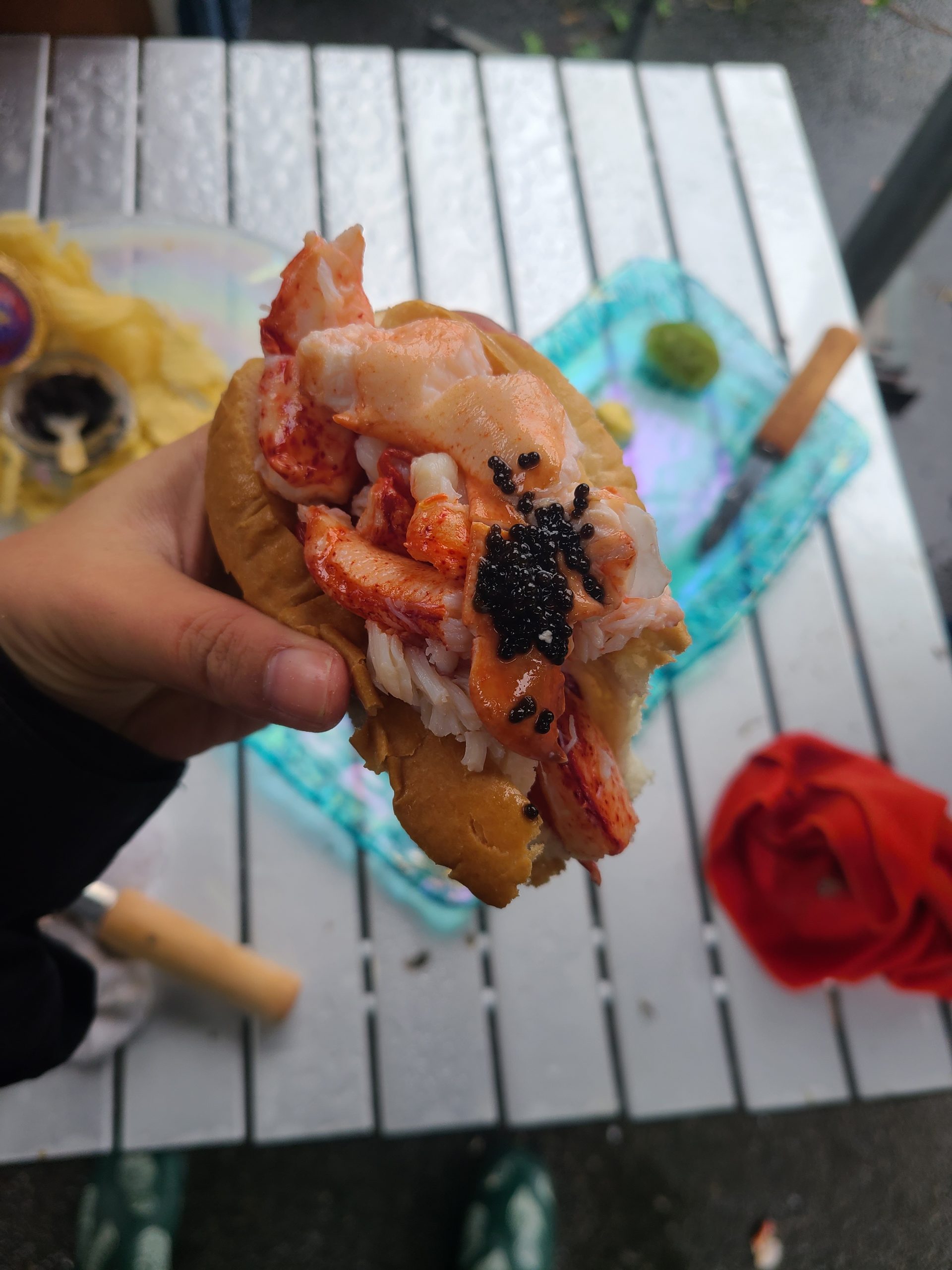
Alexis likes to keep it surprising and FUN. Therefore, expect that the week of your experience to receive an email extending an invitation to participate in an add-on lunch menu option. Amanda and I enjoy living our best life, and so we both took the overflowing lobster roll option as well as chips and caviar. The menu changes every week, so who knows what your choices might be! However, as caviar is one of the company’s main products, you can expect that it will be available.
Final Thoughts:
I’m always looking for connections. Maybe it’s the worrier in me or the planner; sometimes they’re one in the same. I’m forever drawing invisible threads from one facet to the next. Oyster shucking in Brooklyn wasn’t just a hep thing to do on a Monday arvo. It connected me to my culture and my history as a New Yorker. It was a catalyst in my insane interest in the history of this culinary delight, so much so that I ordered a book entirely about the history of oysters in New York.
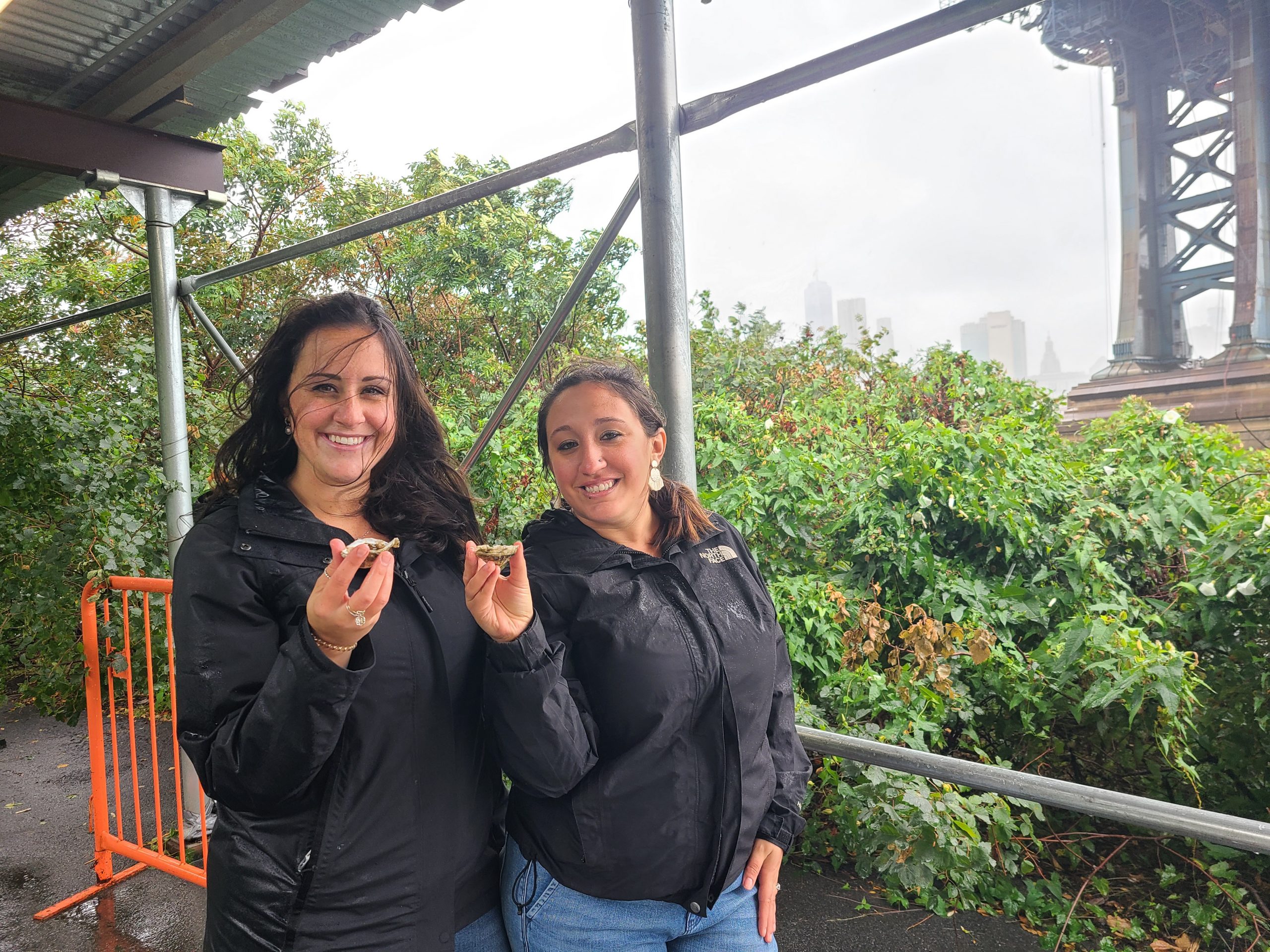


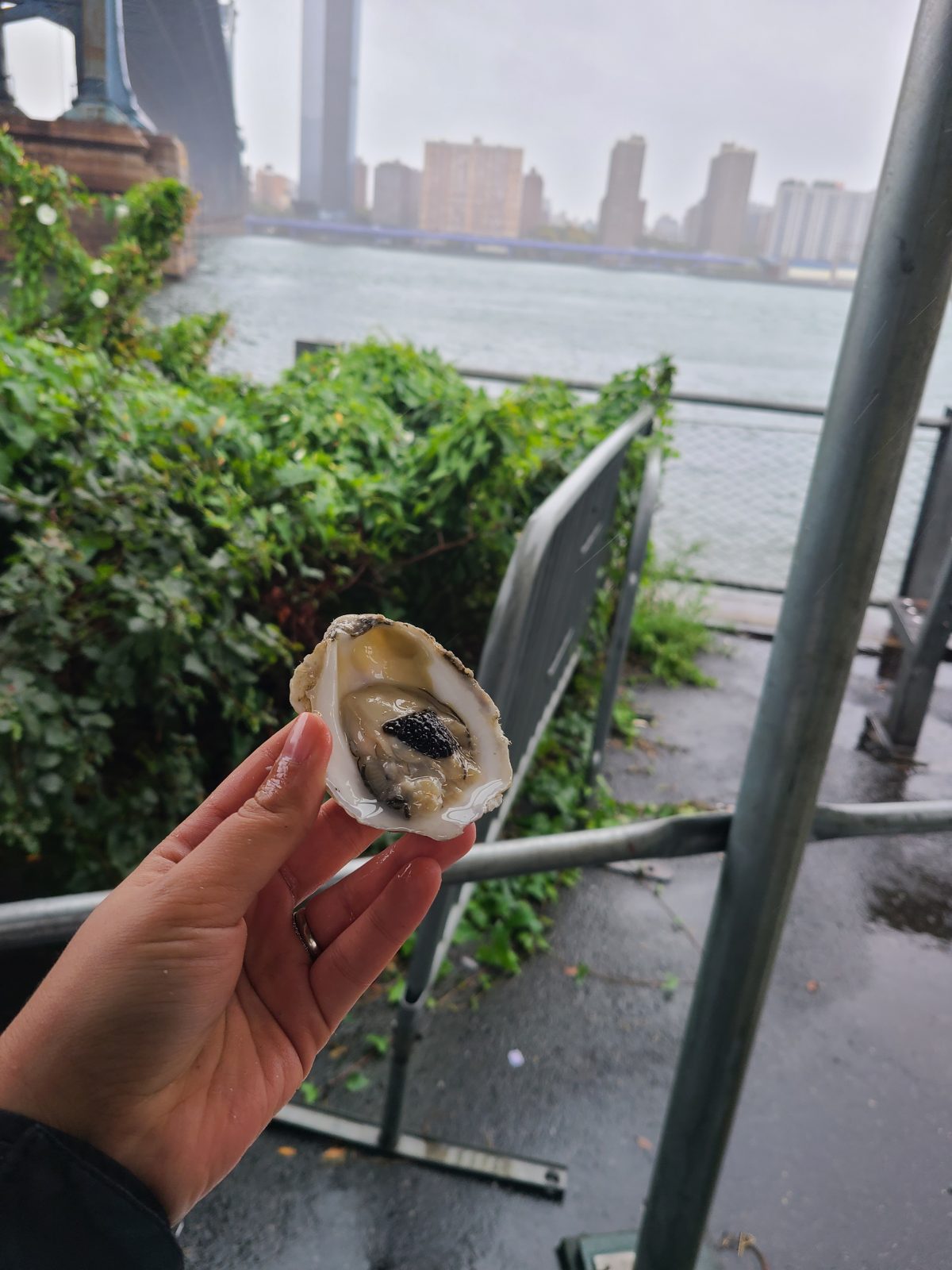

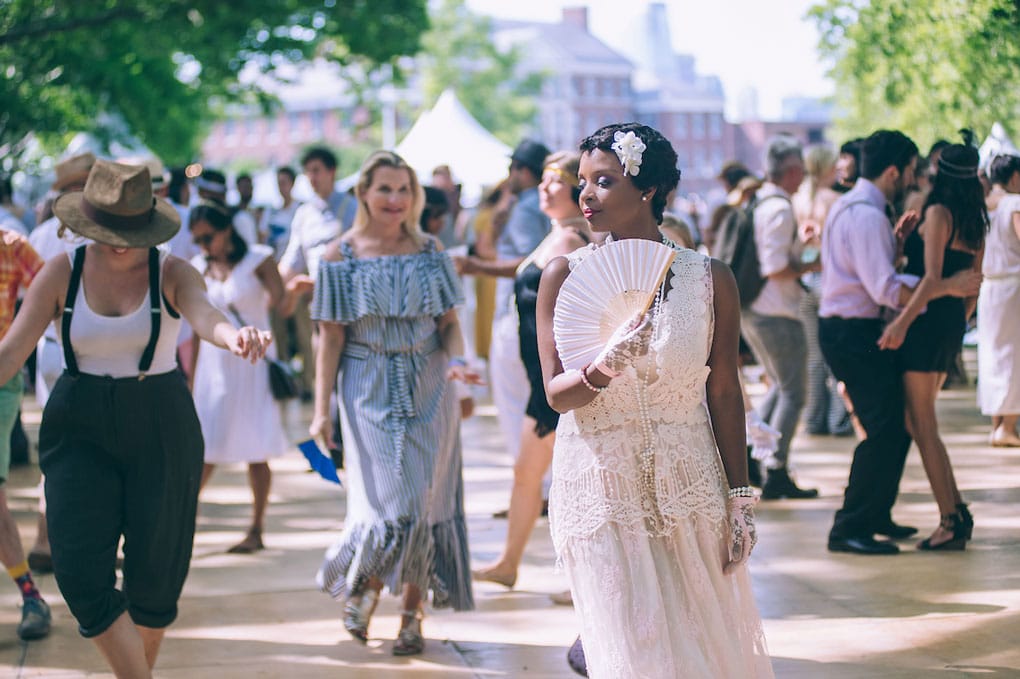
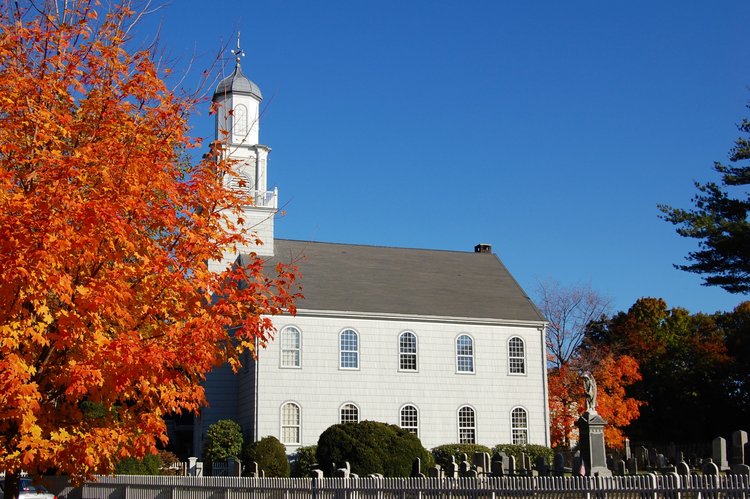

0 comment